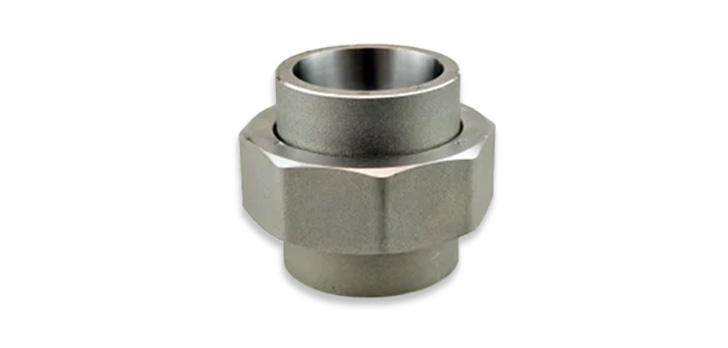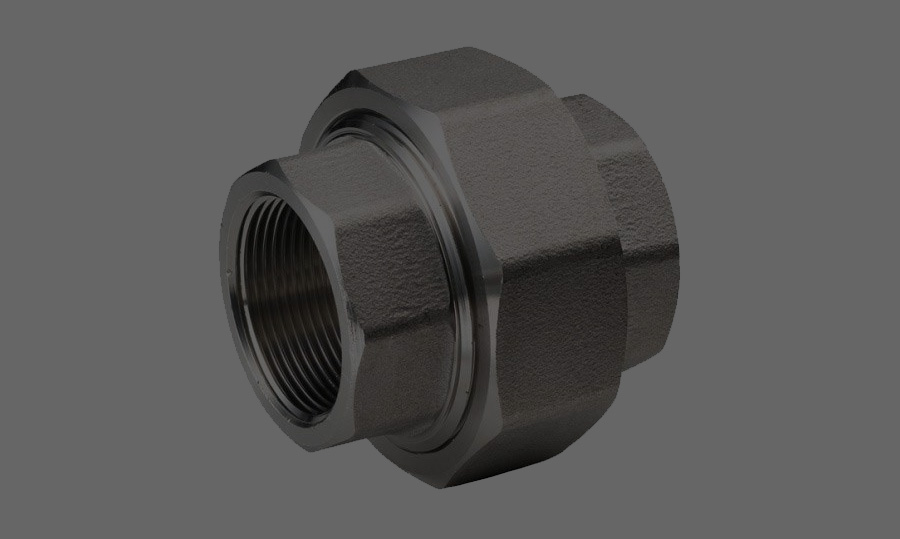When it comes to industrial piping, forged union fittings are of great importance when it comes to the connection of pipes. These fittings are characterized by their high level of durability and pressure resistance and are widely used in plumbing as well as in industrial processes. However, one of the most difficult problems in preserving the quality of union fittings is the formation of a decarburization layer which may adversely affect the strength of these parts.
Understanding Decarburization
Decarburization is the process of reduction of carbon content at the surface of the steel during heat treatment. This is because, at high temperatures, the carbon potential of the environment is low and hence carbon is depleted on the surface of the steel. In forged union fittings, this can lead to lower hardness, decreased tensile strength, and diminished fatigue strength of the pipe union fittings and thus the performance and durability of the pipe union fittings are compromised.
The effects of decarburization are most devastating in areas that require high strength and reliability of the threaded union fittings. For instance in the oil and gas, chemical processing and power generation industries, even a small degradation of the material’s mechanical properties can result in failure
Causes of Decarburization in Forged Union
To effectively prevent decarburization, it's crucial to understand the factors that contribute to this process
- Heat Treatment Atmosphere : During the heat treatment of forged union fittings, the surrounding atmosphere plays a significant role. If the atmosphere lacks sufficient carbon or contains oxidizing agents, the steel will lose carbon from its surface, leading to decarburization
- Temperature : Higher temperatures increase the rate of decarburization. Prolonged exposure to elevated temperatures without proper control can exacerbate carbon loss, weakening the surface of the union fittings
- Time : The duration of exposure to high temperatures also impacts the extent of decarburization. Longer exposure times allow more carbon to diffuse out of the steel, leading to deeper layers of decarburization
- Material Composition : The composition of the steel used in pipe union fittings can influence their susceptibility to decarburization. Steels with lower carbon content or alloying elements that promote oxidation are more prone to decarburization
The Impact of Decarburization on Forged Union Properties
The effects of decarburization on the properties of forged union fittings are multifaceted and can significantly degrade their performance
- Reduced Surface Hardness : The primary effect of decarburization is that the hardness of the material at the surface is decreased. Since carbon is an important factor in the determination of the hardness of steel, then the loss of carbon is equivalent to a softer surface of the steel. This reduced hardness can make the threaded union fittings more prone to wear and tear especially when used in high pressure or in applications where there is abrasion
- Decreased Tensile Strength : The tensile strength of union fittings increases with the carbon content of the material used in the production of the fittings. When decarburization takes place the carbon is reduced and this reduces the ability of the material to handle high stresses. This may result in the early failure of the pipe union fittings when in use and especially in critical areas such as the oil and gas industry or chemical industry
- Impaired Fatigue Resistance : Decarburization also reduces the fatigue resistance of pipe union fittings. Due to the formation of a softer surface layer, the material is more susceptible to crack under cyclic loading conditions. In the long run, it causes the formation of microcracks which can extend and cause severe failures
- Diminished Corrosion Resistance : Occasionally, decarburization may lower the corrosion resistance of forged union fittings. The outer layer may be softer and more susceptible to the corrosive environment and hence the material may degrade faster and have a shorter life span
The Impact of Decarburization on Processing Properties
Decarburization doesn't just affect the final properties of forged union fittings; it also influences the manufacturing process, particularly during forging and heat treatment
- Challenges in Forging : The effects of decarburization are that the forging process is rendered difficult due to the reduced workability of the material. The outer layer of the material may be altered due to heat treatment, and this may affect the manner in which the material responds to the forces that are applied in the forging process, which may cause problems in relation to the shape and size of the union fittings. In extreme cases, decarburization can lead to surface cracking during forging and hence requires further processing or even scrapping of the component
- Complications in Heat Treatment : Another important process that has to be carried out in order to reach the necessary mechanical characteristics of threaded union fittings is heat treatment. However, if decarburization takes place during heat treatment, then it results in variation of hardness and strength of the component. This variability can lead to the fact that some areas of the pipe union fittings can be weaker than others, which can lead to failure
- Increased Rework and Inspection : The existence of decarburization can lead to more work on the part, for example, rework or more thorough examination. This not only raises the cost of production but also the possibility of not identifying areas of decarburization which may result in failure in service

Strategies to Prevent Decarburization
Preventing decarburization requires a combination of careful material selection, controlled processing, and protective measures during heat treatment. Here are some effective strategies
- Use of Protective Atmospheres : One of the most effective ways to prevent decarburization is by controlling the atmosphere during heat treatment. By using a neutral or carbon-rich atmosphere, such as endothermic gas, nitrogen, or a vacuum, the carbon potential can be maintained, reducing the risk of carbon loss. In some cases, coating the forged union fittings with protective materials like copper or stainless steel can act as a barrier, preventing direct exposure to decarburizing atmospheres
- Temperature Control : Temperature control during heat treatment has to be very accurate. One way of reducing the risk of decarburization is to avoid high temperatures or to spend as little time as possible at high temperatures. Preheating and controlled cooling are also part of the heat treatment cycle that makes it easier to control the temperature and time
- Material Selection : Using materials with higher percentages of carbon or those containing alloying elements that minimize oxidation such as chromium or silicon can improve the ability of pipe union fitting to resist decarburization. Other alloying agents such as vanadium or molybdenum may also be used to form stable carbides which slow down the rate of carbon loss and improve the general toughness of the threaded union fittings
- Surface Treatments : A few of the surface treatments that can be used to enhance the carbon content on the surface of union fittings include carburizing, nitriding, or carbonitriding. These processes either add carbon or nitrogen to the surface layer which replaces the loss of carbon during heat treatment. Sometimes, before heat treatment, a thin layer of carbon-rich material can be applied to the surface to compensate for the loss of carbon
- Post-Treatment Inspection : It is also important to inspect the pipe union fittings for decarburization after heat treatment has been done on the fittings. Methods such as hardness testing, microstructure examination or measurement of surface carbon content may be useful in determining the degree of decarburization. In case of decarburization, further surface treatments or reprocessing may be required in order to regain the mechanical characteristics of the pipe union fitting
Conclusion
Preventing decarburization is crucial for maintaining the strength, durability, and reliability of forged union fittings. By understanding the causes of decarburization and implementing effective prevention strategies, manufacturers can ensure that their union fittings perform optimally in even the most demanding applications. From controlling the heat treatment atmosphere to selecting the right materials and applying surface treatments, every step plays a vital role in protecting these essential components from the detrimental effects of carbon loss
You can Contact Nufit Flanges at sales@nufitalloys.com to discover more about Forged Union Fittings, and their applications in various industries.

